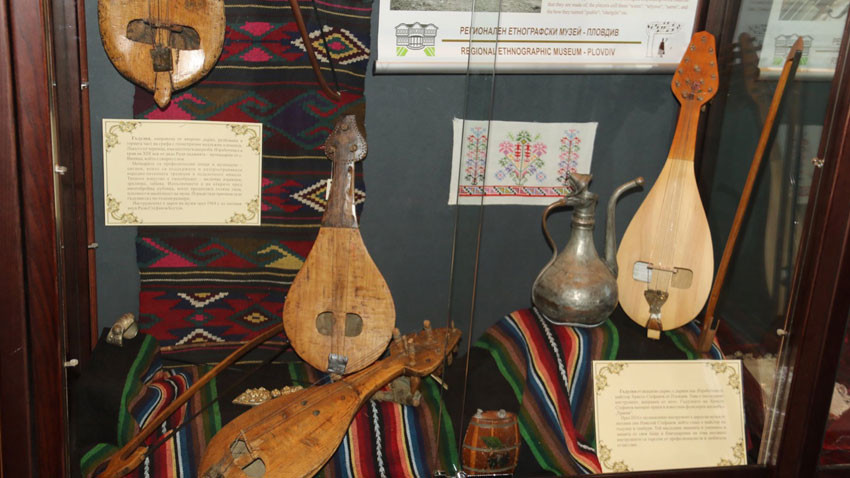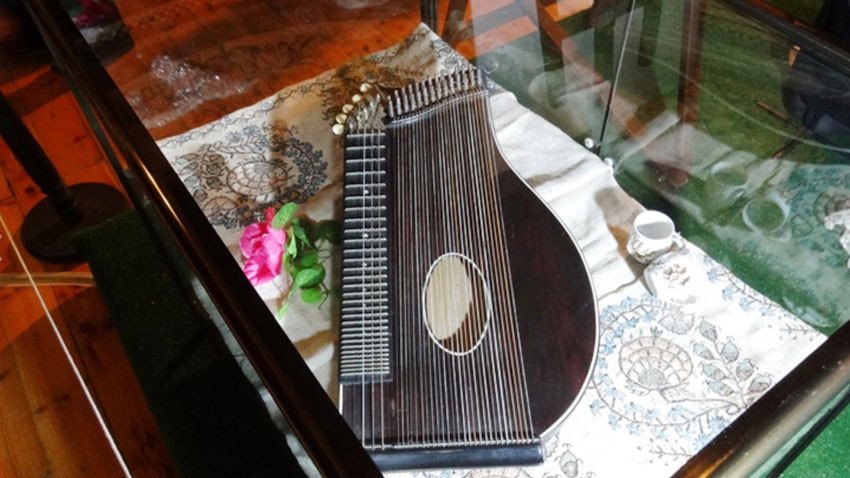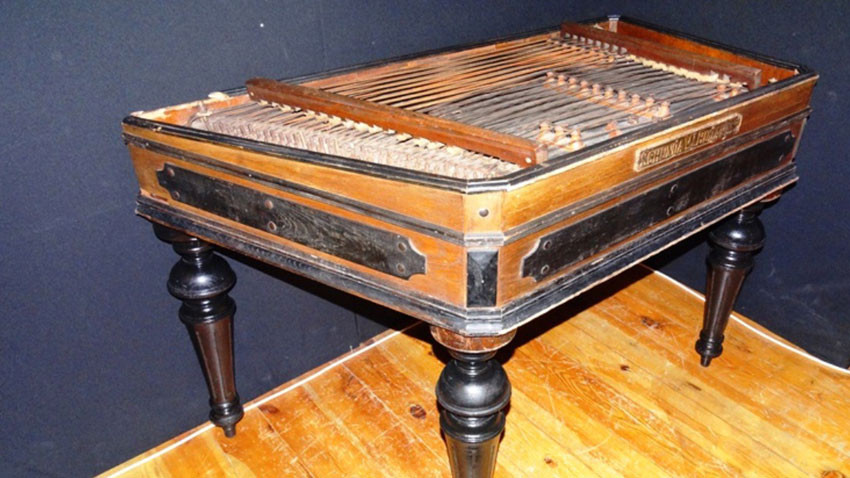
The cultural achievements of the European civilization swept over the newly-liberated Bulgarian state at the end of the 19th and start of the 20th century, warmly received by the enthusiastic Bulgarians thirsty for new knowledge and experiences. How did the urban culture of that period come to life? It was precisely with the opening of the musical salons and the cultivation of a sophisticated taste in the audience – this is what the exhibition "The Song of the Wood" unveiled at the Ethnographic Museum of Plovdiv is all about.
The magic of the Bulgarian gaida (bagpipe), gadoulka (rebec) and kaval (shepherd’s flute), combined with the exquisiteness of classical music instruments, brings back to life the spirit of post-Liberation Bulgaria, according to the organizers of the exhibition, which is part of the events of Plovdiv - European Capital of Culture. Until the end of the month, visitors to the museum will be able to see some of the museum's most valuable exhibits and will learn more about how traditional Bulgarian instruments were gradually replaced by classical music instruments penetrating from Western Europe.
“One of the highlights of the exhibition is a very interesting gadoulka from the end of the 19th century – it is made of maple wood, beautifully carved, and has a mulberry bow”, says Dr. Bilyana Popova from the Regional Ethnographic Museum in Plovdiv. “This particular instrument used to belong to a peasant from the village of Vinitsa, Grandpa Radi Hadjiyata who used to be a dancing bear trainer (known as “mechkar” or “mechkadar” in Bulgarian). It was namely these bear handlers that used to preserve and spread the tradition of folk songs in the past. They used to deal with an unusual form of art which required from them to put on an attractive and spectacular show, so their musical instruments had to be bigger in size. The gadoulka instruments that bear trainers used, for example, were larger than ordinary ones because they would usually play outdoors and needed to produce a loud and clear sound.”

Visitors of the exhibition can also see the first bagpipe of the famous performer of Rhodopean songs, Georgi Chilingirov, and right next to it the harmonium of the prominent public figure from the National Revival Period, Naiden Gerov, as well as other European "aliens" - the string instruments qanun, zither, cimbalom, along with the familiar violins.

“While Bulgaria was still under the Ottoman Rule, a new type of urban society started to emerge here, which was imbued a new spirit and carried its new musical preferences”, Dr. Bilyana Popova continues.“Bulgaria started to gradually open itself to Europe - many traders and craftsmen began travelling abroad, purchasing musical instruments from Western countries and opening music shops here. European music arrived here with the emigrants, with the Protestant missions and their harmoniums (reed organs), and also with the Bulgarians who lived for some time abroad. After the Liberation from the Ottoman Rule in 1878, Bulgaria had its first professionally trained musicians coming back from abroad and with them came also the first master makers of classical musical instruments”.

The performers in the music salons of the time were outstanding Bulgarian musicians who received their training in Western conservatories and were highly demanded guest soloists in the most renowned concert halls around the world. The exhibition tells the stories of three Bulgarian musicians of that period: Sasha Popov - a gifted violinist and conductor, also the founder of the Tsar’s Symphony Orchestra, predecessor of the Sofia Philharmonic Orchestra;Vasco Abadjiev - a child prodigy on the violin, dubbed the "Paganini of the 20the Century"; and Neda Fticheva - concert violinist and later violin professor at the Sofia Girls' High School.

“Concerts in Bulgaria were held not only in concert halls but also in ballrooms”, Dr. Bilyana Popova adds. “During a ball, the music would be performed by some of the guests or by a classical orchestra, yet following a strict program. It started with a polonaise dance, followed by a waltz and, of course, ended with a Bulgarian horo chain dance. In that period European classical instruments were still comparatively slow to penetrate Bulgarian culture so traditional instruments continued to be used and both interacted. There were even orchestras featuring both a gadoulka and a violin, as well as other resembling groups of instruments”.

During the exhibition days, visitors can also watch and listen to re-enactments of two types of traditional Bulgarian weddings - a typical wedding from the Rhodope Mountain and a typical urban style wedding, with their traditional instruments of the kaba gaida (bagpipe variety) and the zither, emphasizing on the contrast between the local Bulgarian traditions and the European culture gradually gaining more and more popularity in this country in the late 19th-early 20th century.
English Rossitsa Petcova
Photo: ethnograph.info and BTAThe ninth edition of the initiative Poetry in the Metro opens today and lasts until 23 December. The project was initiated by the Polish Cultural Institute in Sofia. It includes poems by 20 European writers. They will be displayed on panels..
Awakener/enlightener - a person who, through his actions, ideas or creative work, awakens the spirit of the people, preserves and spreads national identity, culture and education. In Bulgarian history, this term is most often associated with the period of..
For the twenty-third year, the Bansko Film Fest team will take the audience to some of the most extreme corners of the world with 75 films from 39 countries . ''All of them are premieres, and for some of them, the screenings in Bansko will be..
The Gala Concert of the National Ballet of El Salvador will take place today at 16.00 in the State Opera House in Stara Zagora as part of the..
After the success of the "We are the children of the river" festival in September, a civic foundation is once again collaborating with the Plovdiv..
“A story that is worthy of a movie” is what we often say when we hear about some incredible event or an interesting story. It is cinema..

+359 2 9336 661
